If you did the Ancestry test and found Africa Southeastern Bantu DNA ethnicity in your results, you might be curious to learn more about this part of Africa and how DNA from this region ended up in your results.
I initially became curious about this particular ethnicity because a very small amount showed up in my mother’s DNA results. It was surprising to see this ethnicity, because she is otherwise more than 95% European.
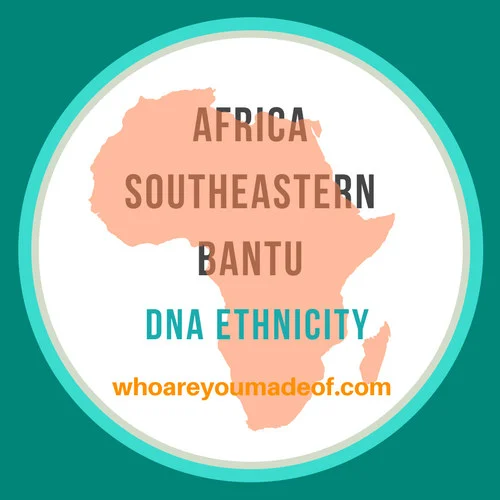
My husband, who is from a Latin American country, also shows this trace ethnicity, as does the daughter of friend, whose father is from Mexico. Where did this Southeastern Bantu come from?
Whether you have a very small amount like my mother does, or a much higher percentage, you will find this post helpful in understanding a little bit about the history of the area.
Plus, find out how people from there came to live in the United States, and potential explanations as to how why your ethnicity estimate shows the Southeastern Bantu DNA ethnicity.
You may also be interested in the following article, which discusses the updated Ancestry DNA region including the Southeastern Bantu:
Where is the Southeastern Bantu DNA ethnicity?
I always thought of myself as fairly knowledgeable about world geography, especially since I have a degree in International Affairs. I had to take plenty of world geography and history classes in college, as many people do.
Despite this, I found myself sorely lacking in awareness of African geography and history. When I saw the Southeastern Bantu on my mom’s DNA results, I knew that I had some research to do.
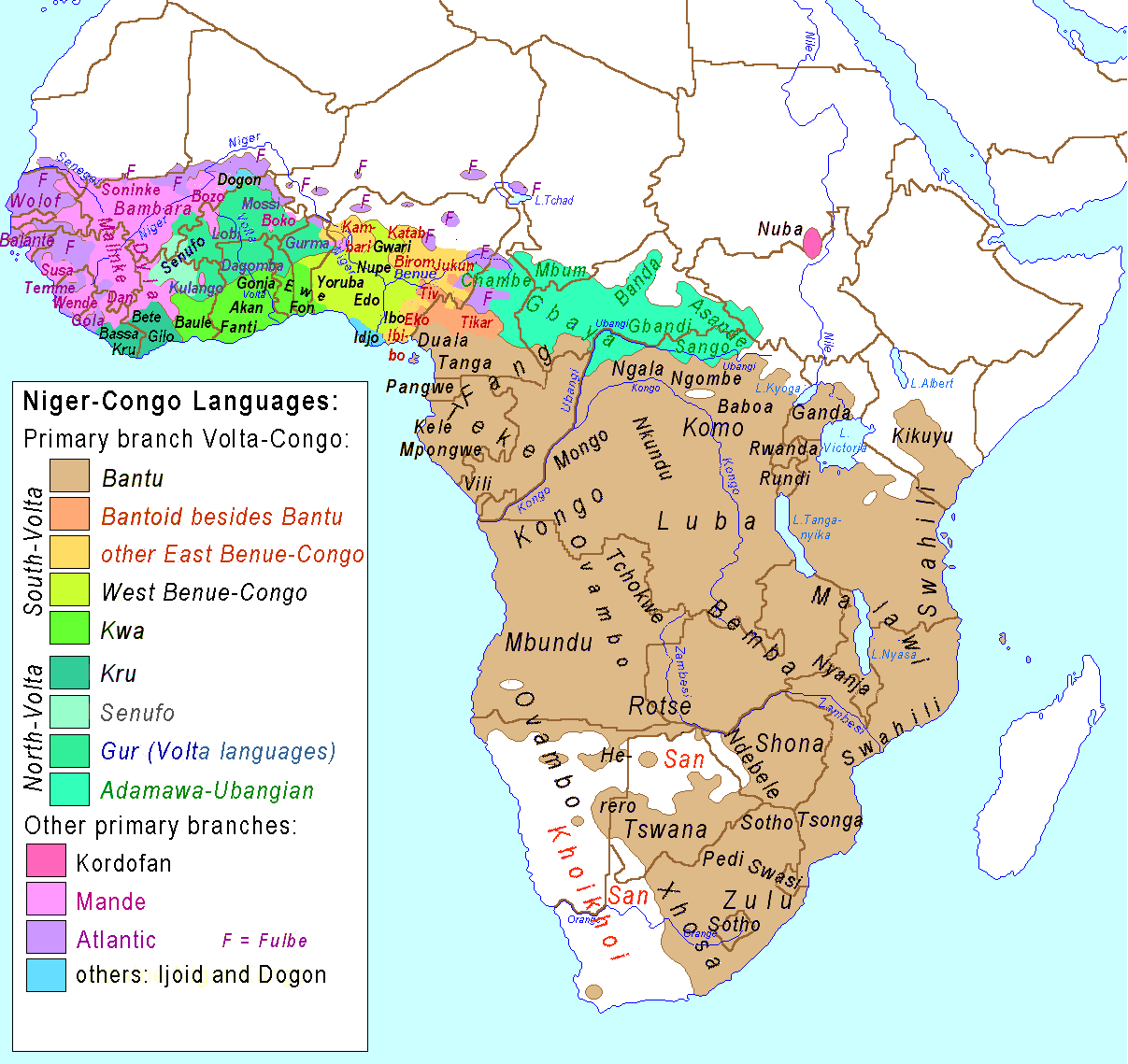
What does Bantu mean?
Bantu is a general term used to describe as many as 600 different ethnic groups in Africa who speak a Bantu-related languages. There are more than 250 Bantu languages spoken in Africa, ranging across a very large geographic area.
Cool fact: Did you know that Swahili is a Bantu language?
As you can see from the map of Africa, these languages are spoken across almost the whole central and southern parts of the continent. For those of us who find it more useful to think of the area in terms of modern countries, the Bantu language (and Bantu peoples) are most commonly found in:
- South Africa
- Kenya
- Democratic Republic of the Congo
- Namibia
- Botswana
- Zimbabwe
- Zambia
- Angola
- Tanzania
- Mozambique
- Uganda
The Bantu group as a whole is extremely diverse from the perspective of language and culture. During the time period immediate before the trans-Atlantic trade of enslaved individuals began to gain steam, there were numerous kingdom and empires.
These were not loose groups of “natives”, as Europeans tended to view them. Rather, the Bantu peoples had advanced political organizations and built beautiful architecture.
Some of these architectural ruins have still survived for us to imagine what they might have looked like in all of their glory, like the Great Zimbabwe Complex.
How far back is my Southeastern Bantu ancestor?
If you are curious about this, don’t feel alone. This was my very first question, especially since I was surprised to find this ethnicity in my mom’s results, and it became really important to me to figure out where the ancestor who contributed this DNA to her is in the family tree.
One of the first steps to figuring out where your Bantu ancestor came into your family tree is to get an estimated number of generations back to the “100%” ancestor. It’s tricky business, and not always completely reliable, however.
DNA is inherited randomly, and so we don’t always inherit exactly 50% of each of our parents’ ethnicities. Some generations we can inherited more than 50% of a specific ethnicity from one or both of our parents.
Conversely, our parents can have an ethnicity (or more than one) that they only have a small amount of, and therefore we inherited none.
For the sake of this discussion, though, we do need to have some sort of a reference point:
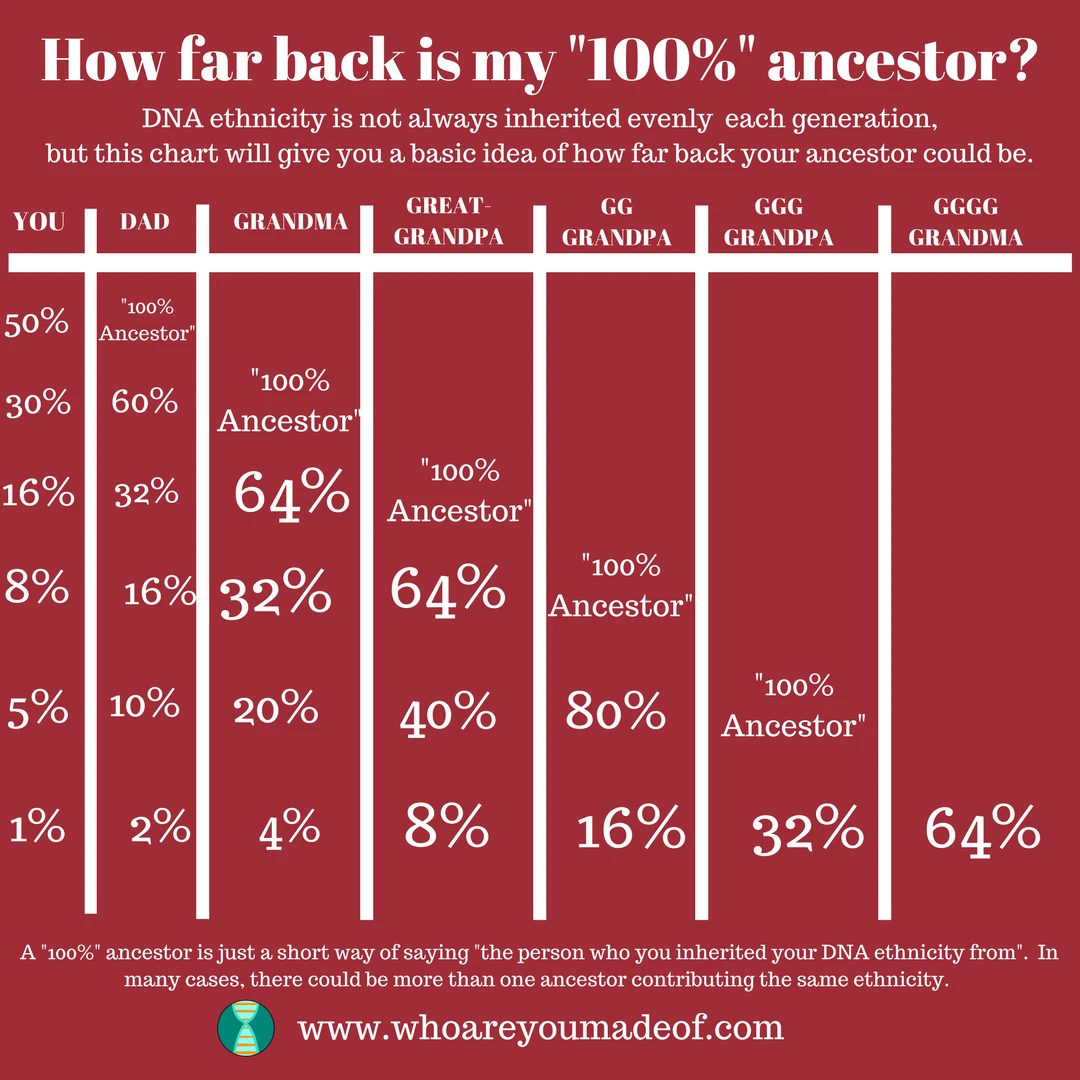
When you have a high percentage of Bantu, it could mean a more recent ancestor
If you have more than 5-10% Southeastern Bantu DNA ethnicity, it could mean that you have a more recent Bantu ancestor. From the chart above, you can see that if you have 16% Bantu, you could find your “100%” ancestor, or the person who contributed that ethnicity to you, as recently as a great-grandparent.
There is one word of caution that I would like to issue: It is always possible to have inherited an ethnicity from more than one line of your family. If this happened in your family, then you could be misled into thinking that the ancestor is more recent than he/she really is in your line.
For example, you might have inherited 5% from each of your parents. Or 10% from one parent, and 20% from the other. They could have also inherited Bantu from each of their parents, and so on, and so on.
Just keep this in mind when you are looking at your tree – especially when you have relatively high percentages and you don’t have a known fairly recent immigrant ancestor.
African immigration to the US?
When I speak of a recent African immigrant ancestor, I’m not referring to individuals who were forcibly taken from Africa to be enslaved in North and South America.
Instead, I am talking about immigrants who arrived from Africa in the 1900s. There are more than 2 million African immigrants living in the United States, and if you count their descendants, the number is much greater.
Immigration from Africa has been steadily growing since the 1970s. Someone who immigrated the US in the 1970s could have adult grandchild by now.
A small percentage could indicate a very distant relationship to your Bantu ancestor
In my case, I inherited only an extremely small amount of Southeastern Bantu from my mother. It’s so small, that it doesn’t even show up on Ancestry DNA’s results – I had to analyze my DNA with on Gedmatch (what is Gedmatch?) to even be able to see it.
My mother has between 1% and 5% Southeastern Bantu, so I can see from the chart (assuming that there was only one line where Bantu came into her tree, that the ancestor must be around the 5 X great grandparent level (i.e. a great-great-great-great-great grandparent).
There is a possibility (actually, likelihood) that the ancestor was a couple of generations closer, or a couple of generations more distant because of the randomness of recombination of DNA each generation.
Is my trace Bantu noise?
It is possible for a very small percentage, like 1-2%, for example, to be remnants of a very distant population, and not a recent – like less than 500 years – event in your family tree.
It’s true that sometimes it is just noise, but a lot times it’s real. I’m putting an entire article together about this specific question.
For now, I will only mention that I don’t believe that the Southeastern Bantu showed up in my mother’s DNA by accident. Usually, the “noise” shows up when there is a very distant (thousands of years ago) population that migrated to a particular area.
The person who shows that ethnicity might have dozens of ancestors who show a tiny amount still from that ancient population.
In the case of my mother’s family, things are different. We know that all humans migrated from Africa, true, but this happened as long ago as hundreds of thousands of years.
It’s extremely unlikely (if not entirely impossible) that DNA ethnicity from 200,000 years ago would show up in an autosomal DNA test.
There is a long period in American history that did put people from my mother’s paternal grandmother’s family tree in contact with people from the Bantu parts of Africa, however. For me and my family tree research, this relationship distance carries me way back to the middle of the 1700s, to Colonial New England, on my mother’s tree.
You might know where this is going.
How Southeastern Bantu people (and the DNA ethnicity) ended up in North and South America
I had assumed when I was growing up that all of my mother’s grandparents were the children of first generation immigrants. This was true, all except for one.
My mother’s paternal grandmother was born in the US, as were her parents, and everyone else in her line as far back as I could trace.
When I saw my mom’s DNA results come back, one thing became clear: my mother acquired this ethnicity through an enslaved ancestor, or descendants of enslaved ancestors. Based on geography, our country’s timeline, and historical context, this is clearly the most logical explanation.
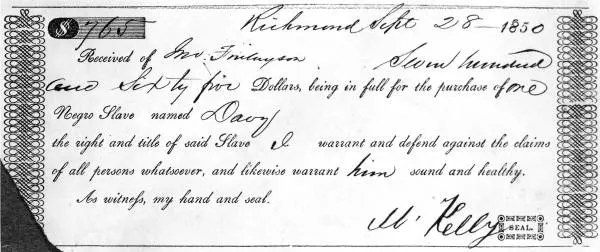
Select facts about slavery, Southeastern Bantu, and DNA
An estimated 12.7 million Africans were brutally and tragically torn from their communities and families and were sent to North and South America. Of these 12.7 million people:
- Only about 10.5 million survived the trip across the Atlantic Ocean. A shocking death rate of about 20% on each voyage was common.
- Less than 400,000 were sent directly to the area that is now the United States
- The remainder were sent to the islands in the Caribbean, Mexico, Central and South America. This means that most enslaved Africans were sent to places in North and South America that we not part of the United States.
There are a few more facts that you should know in order to really understand the possible ways that you inherited your Southeastern Bantu:
- As many as 70,000 of the enslaved individuals that went to the Caribbean and South America ended up in the United States.
- Depending on the laws of the territory, the children of the enslaved were often born into slavery, and some of these descendants often ended up being sold and transported to the United States.
- While there is no way to know for sure how many enslaved Africans would have shown a Bantu ethnicity, based on historical evidence, we know that that many of the captured were of Bantu origin, and many others might have been of diverse African ancestry because of events like the Bantu Migration.
When you are looking at your family tree to figure out possible ancestors who maybe have had Bantu ancestry, you should look the geography of the places where your family history research has taken you.
You should keep an open mind to the idea that you could have acquired your Bantu ethnicity from anyone who has ancestry anywhere in North or South America.
Is it possible to trace my Southeastern Bantu DNA ethnicity?
In many cases, you might be able to learn more about the ways in which you could have inherited Southeastern Bantu. If you have a more recent African immigrant ancestor, then you should be able to trace your ancestry with relative ease.
For those of you with more distant Bantu ancestry, especially you believe that you had enslaved ancestors within North or South America, you will find the process more difficult.
Resources for researching recent African immigrant ancestors:
If you have a parent, grandparent, or great-grandparent who you believe was an African immigrant, you should start with researching your immediate family.
- Talk with your oldest surviving relatives to learn as much as you can about your family’s known history. Don’t forget to take notes.
- Obtain your family member’s birth and death certificates, if applicable. You can do this by contacting your state’s vital records office, and many times you will have to prove your relationship.
- Using your ancestor’s birth date and name, you might be able to find an immigration record.
- If you have the immigration record, you can begin to search for vital records in your ancestor’s country of origin.
- Don’t forget to check your DNA match list. If you know for sure that your Bantu comes from a relatively recent ancestor, you should have DNA cousins who are 4th cousins or closer. Getting in touch with them to find out what they know about their family tree will likely be very helpful to you.
Resources for researching US slave ancestry
In order to research enslaved ancestry within the United States, you need to start with today. Trace your family tree back on all lines as far back as you can.
Most importantly, you need to find all of your ancestors on the 1870 and 1880 census.
This might seem very difficult, if you start with your family as you know it today, you will be able to use the census forms from 1940 and previous in order to trace generation by generation back to 1870 or 1880.
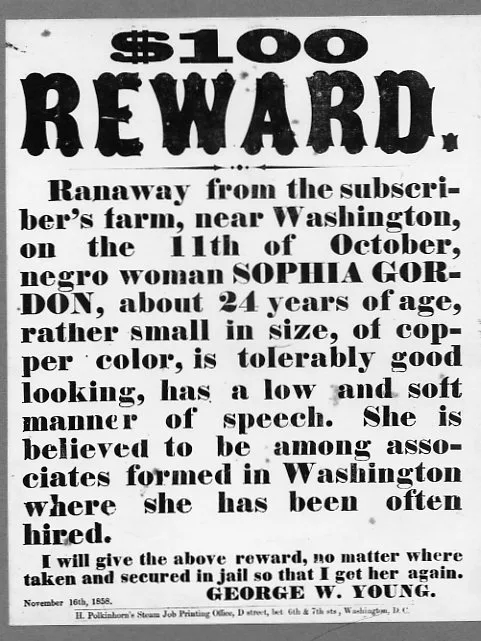
Once you have established where all of your ancestors lived in the two census records after the Civil War, in some cases you might be able to find where they were enslaved, and trace those lines further using certain types of records.
It is really very sad that better records weren’t kept, but we only have what we have, so we have to be creative and diligent.
If you can figure out where your ancestors lived during 1870, the next step is to see if you can find information about who the major landowners were in that area. Many previously enslaved stayed in the area where they already lived and continued working where they had always worked (though supposedly now, for pay).
Enslaved individuals usually had surnames, though they were not always used in documents. The surnames that they were known by could be those of their former enslaver, so they wouldn’t always have a surname that matched the last owner that they had.
If you do see a surname from local landowners that matches that of your ancestor, however, this is at least something to look into.
It is a high priority to figure out who the last enslaver was. The reason is that enslaved individuals rarely were responsible for creating their own records, meaning that all records about enslaved people were in the name of the enslaver.
By tracing transfer of property, you can sometimes trace the movement, and thus family history, of enslaved people.
Types of records you might be able to use to locate your enslaved ancestors:
- property, legal (like probate records) and tax records for local enslaving families
- Baptismal records and other church records (some churches kept records of baptisms of enslaved individuals, etc)
- Freedmens Bureau records
- Newspapers, to look for clippings like the one above
Hopefully, I will have some success tracking down my enslaved ancestor. I have a few theories that lead me back to a Virginia enslaving family with the surname of Thompson, but so far, no proof.
I am going to write a more comprehensive article about profiling enslavers and more about understanding and finding enslaved individual’s records.
Conclusion
I hope that this article was helpful to you in understanding where the Southeastern Bantu DNA ethnicity comes from. Additionally, if you are interested in tracing your Bantu roots, I hope that I was able to point you in the right direction to get started.
If you have any questions, comments, concerns, or want to share your story in the comment section, I would love to hear from you.
Thank you for stopping by!


Dollie
Wednesday 9th of August 2023
My mother have 14% of Africa Southeastern Bantu. It was very interesting to read about this in the article you've written.
KeKe
Thursday 3rd of August 2023
Very Interesting!
Tshibuayi
Saturday 8th of July 2023
The largest Bantu population is in the DRC, clearly shown on your map, but deliberately left out from the list of countries… why the miss information?
Mercedes
Saturday 8th of July 2023
Hello! Thank you so much for pointing out that mistake - it has been corrected and was not intentional. Have a wonderful day, Mercedes